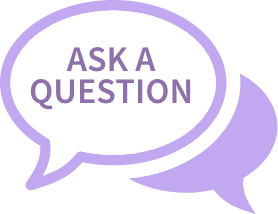How Much is a Boob Job in the U.S.?
Breast augmentation surgery, also known as a “boob job,” is a popular cosmetic procedure in the United States. Many patients consider this surgery to enhance their breasts’ size, shape, and overall appearance. If you’re considering breast augmentation, it’s essential to understand the factors that influence the cost of this procedure. Understanding the average cost range for breast augmentation in the U.S. can provide a helpful guideline. According to recent statistics and surveys, the average cost of breast augmentation ranges from $5,000 to $12,000. However, it’s important to note that these figures are estimates, and individual prices can vary.
While The Aesthetic Society estimates that the average surgeon’s fee alone is $4,866, the average cost of breast implants is around $6,488 based on data from Real Self collected over 1,400 recent reviews. This includes the surgeon’s fee, operating room, and anesthesia fees. However, costs can range anywhere from $3,601 to $10,000 or more, depending on various factors such as your surgeon’s expertise, the location of the procedure, and the type of implant you choose.
To make breast augmentation more accessible, many surgeons offer financing options. These options can include payment plans, medical credit cards, or personal loans tailored to fit your budget. It’s crucial to research and understand the terms and interest rates associated with these financing options to make an informed decision.
As a plastic surgeon with more than 30 years of experience and expertise in a wide range of cosmetic breast procedures, plastic surgeon Joe Gryskiewicz, MD is dedicated to providing each of his patients with the best possible results.
Cost Considerations: Saline vs. Silicone Implants
One of the main decisions you’ll make during the breast augmentation process is the type of implant to choose. This decision not only affects the look and feel of your breasts but also impacts the total cost of the procedure.
- Saline implants consist of a silicone outer shell filled with a sterile saline solution (salt water). A key advantage of saline implants is that they can be filled after they’re inserted into the body, allowing for a smaller incision. Additionally, if a saline implant ruptures, the saline solution is safely absorbed by the body. As for cost, saline implants are generally less expensive than their silicone counterparts. This lower cost can make them a more attractive option for some individuals, particularly those on a tighter budget.
- Silicone implants, on the other hand, are pre-filled with a silicone gel that closely mimics the feel of natural breast tissue. Many people believe silicone implants offer a more natural look and feel. However, if a silicone implant ruptures, it might be harder to detect, as the gel may remain within the implant shell or escape into the breast implant pocket. Therefore, regular MRIs or ultrasound screenings are recommended to ensure the integrity of the implant. When it comes to cost, silicone implants are generally more expensive than saline implants. The higher price is due, in part, to the more complex manufacturing process and the materials used.
Other Factors That Influence the Cost of Breast Augmentation
When considering breast surgery, it’s important to understand the various factors that can influence the overall cost of the procedure. By having a clear understanding of these factors, you can make informed decisions and plan accordingly. Let’s explore these factors in more detail:
- Surgeon’s Experience and Expertise: The experience and expertise of the surgeon play a significant role in the cost of breast augmentation. Surgeons with extensive experience and a proven track record of successful procedures often charge higher fees. Their expertise and skill in performing breast augmentations give them the ability to deliver optimal results. While it may be tempting to choose a less experienced surgeon to save money, it’s vital to prioritize safety and quality outcomes.
- Location of the Surgery: The geographical location where the surgery takes place can have a considerable impact on the cost of breast augmentation. Different states and cities in the USA have varying costs of living and healthcare expenses, which can influence surgical fees. Urban areas and regions with a higher cost of living generally have higher prices for surgical procedures. It’s essential to consider the location factor while researching potential surgeons and their associated costs.
- Type of Implants: The type of breast implants chosen for the surgery is another significant factor affecting the cost. There are different types of implants available, such as saline and silicone implants. Each type has its own unique features, advantages, and associated costs. The choice of implant type will depend on various factors, including personal preferences, desired outcomes, and budget considerations.
- Anesthesia and Facility Fees: Anesthesia and facility fees are additional costs to consider when estimating the total expense of breast augmentation surgery. Anesthesia fees depend on the complexity and duration of the procedure. The more intricate the surgery, the higher the anesthesia costs may be. Additionally, the quality and accreditation of the surgical facility can also impact the overall cost. Reputable facilities with advanced equipment and experienced staff may charge higher fees to ensure patient safety and comfort.
- Additional Expenses: Apart from the primary surgical costs, there are other potential expenses to keep in mind. These may include pre-operative tests, post-operative garments, medications, and follow-up appointments. Pre-operative tests such as blood work and mammograms are essential to assess your overall health and ensure you’re a suitable candidate for surgery. Post-operative garments, such as surgical bras or compression garments, aid in the healing process. Medications may be prescribed to manage pain and minimize the risk of infection. It’s crucial to factor in these additional expenses when budgeting for the procedure.
Does Breast Revision Cost More Than Breast Augmentation?
The cost of breast implant replacement or breast revision surgery can often be higher than the cost of the initial procedure. This is due to several factors:
- Complexity: Replacement or revision procedures can be more complex than initial augmentation surgeries. They may involve removing scar tissue, replacing damaged implants, or adjusting the size or position of the implants. Each of these steps adds to the overall complexity of the procedure, which can in turn increase the cost.
- Additional Procedures: Sometimes, a breast implant revision isn’t just a simple swap of implants. The surgery might also involve a breast lift or other procedures to correct complications or to achieve the desired aesthetic results.
- Unforeseen Complications: The risk of complications can be higher with revision surgery, which can potentially lead to additional costs.
Breast Augmentation Financing and Payment Options
When considering breast augmentation, it’s important to explore the plastic surgery financing and payment options available to make the procedure more affordable. Fortunately, there are several options that can help you manage the cost and ensure you receive the desired outcome. Let’s delve into some of the common financing options:
- Payment Plans: Many plastic surgery practices offer in-house payment plans, allowing you to spread the cost of breast augmentation over time. These plans typically involve making monthly payments until the total amount is covered. It’s essential to inquire about the terms, interest rates (if any), and any associated fees. Make sure you understand the payment schedule and factor it into your budget.
- Medical Credit Cards: Medical credit cards specifically designed for healthcare expenses, including cosmetic procedures, can be a convenient option for financing breast augmentation. These credit cards offer promotional financing options, such as no interest for a certain period, if you pay off the balance within the promotional period. It’s important to read the terms and conditions carefully and understand the interest rates that may apply once the promotional period ends.
- Personal Loans: Obtaining a personal loan from a bank or a financial institution is another option to finance your breast augmentation surgery. Personal loans can provide a lump sum that you can use to cover the procedure’s cost. Compare interest rates, repayment terms, and any associated fees from different lenders to find the most suitable loan option for your situation. Remember to factor in monthly loan repayments when budgeting for the procedure.
- Healthcare Financing Companies: Several healthcare financing companies specialize in providing loans specifically for medical procedures. These companies work with a network of healthcare providers, including plastic surgeons, and offer flexible payment plans tailored to your needs. It’s important to research and compare different healthcare financing companies to find the one that offers competitive interest rates and favorable repayment terms.
Before committing to any financing option, it’s crucial to carefully review the terms and conditions, including interest rates, fees, and repayment schedules. Calculate the total amount you would repay over time to ensure it aligns with your financial capabilities. It’s advisable to consult with a financial advisor or discuss your options with the plastic surgery practice to gain a clear understanding of the financial implications.
Aside from financing options, you may also consider saving up for the procedure in advance. Creating a dedicated savings plan can help you accumulate the necessary funds over time. By setting aside a portion of your income each month, you can gradually save towards your breast augmentation surgery. It may take longer to achieve your goal, but it can help you avoid interest rates or additional fees associated with loans.
It’s important to check if your health insurance policy covers any part of breast augmentation surgery. In most cases, insurance policies do not cover elective cosmetic procedures. However, if you have a medical condition that necessitates breast reconstruction or if you meet specific criteria, insurance coverage may apply. Contact your insurance provider to understand their policy and any potential coverage options.
What to Expect During the Breast Augmentation Process
Once you have gained an understanding of the costs and financing options for breast augmentation, the next step is to schedule a consultation with a qualified plastic surgeon. The consultation is an important step in the breast augmentation process, as it allows you to discuss your goals, expectations, and concerns with the surgeon. Let’s explore what you can expect during this important phase:
- Scheduling the Consultation: Contact the plastic surgery practice you are interested in and schedule a consultation appointment. Ensure that the surgeon specializes in breast augmentation and has a strong reputation for delivering successful results. It’s advisable to schedule consultations with multiple surgeons to compare their approaches, communication styles, and expertise before making a final decision.
- Initial Meeting: During the consultation, you will meet the surgeon and their team. They will gather your medical history, including any previous surgeries, medical conditions, or allergies. This information helps them assess your candidacy for breast augmentation and identify any potential risks or complications.
- Discussion of Goals and Expectations: This is an opportunity for you to openly discuss your goals and expectations with the surgeon. Share your desired breast size, shape, and overall outcome. The surgeon will provide professional guidance and insights based on their experience and expertise. They will also inform you if your goals are realistic and achievable, taking into account your existing anatomy and body proportions.
- Physical Examination: The surgeon will conduct a thorough physical examination of your breasts, considering factors such as breast size, shape, skin elasticity, and nipple position. This examination helps the surgeon determine the most suitable surgical approach and technique for your specific case. They may also take photographs for documentation and to aid in the surgical planning process.
- Exploring Surgical Options: Based on your goals and physical examination, the surgeon will discuss the various surgical options available to you. They will explain the different types of incisions, implant placement options (above or below the muscle), and the pros and cons of each approach. This discussion will help you make an informed decision about the surgical plan that aligns best with your desired outcome.
- Risks and Complications: The surgeon will provide you with detailed information about the potential risks and complications associated with breast augmentation. It’s important to have a comprehensive understanding of these risks to make an informed decision. The surgeon will explain steps taken to minimize these risks and answer any questions or concerns you may have.
- Cost and Financing: During the consultation, the surgeon’s office will provide you with a breakdown of the estimated cost of the procedure based on your specific case. They will also discuss the available financing options and payment plans, helping you understand the financial aspects involved. Take this opportunity to ask any questions regarding the cost, payment, and insurance coverage, if applicable.
- Preparing for Surgery: If you decide to proceed with breast augmentation, the surgeon’s office will provide you with pre-operative instructions. These may include guidelines on medication usage, smoking cessation, and dietary restrictions. You may also be required to undergo pre-operative tests to ensure your overall health and readiness for surgery.
Breast Implants Cost FAQs
What is the average cost of breast augmentation surgery?
The average cost of the surgeon’s fee for breast augmentation surgery in 2020 was $4,866. However, the actual cost can vary depending on various factors such as the surgeon’s fee, geographical location, and the complexity of the procedure.
Does the cost of breast augmentation include the cost of the implants?
The cost of breast augmentation usually includes the cost of the implants. However, it’s always best to confirm this with your surgeon as practices can vary.
What is the average cost for the removal of breast implants?
The average cost for breast implant removal in 2020 was $3,579. This cost can vary based on the surgeon’s fee, geographical location, and the complexity of the procedure.
Are there any additional costs associated with breast implant surgery?
Yes, there can be additional costs associated with breast implant surgery. These can include anesthesia fees, hospital or surgical facility costs, medical tests, post-surgery garments, and medications. It’s important to discuss these potential costs with your surgeon during your consultation.
Further Reading About Breast Implants Surgery with Dr. Joe
- Read Dr. Joe Breast Augmentation with Lift
- Read Dr. Joe’s Blog about What Is a Mini Boob Job?
- Read Dr. Joe’s Breast Procedures Page
- Read Dr. Joe’s blog about Why Dr. Joe Prefers Mentor Implants
- Read Dr. Joe’s Quick Recovery Breast Augmentation
Medical References about Breast Implants
- Breast Implants: Silicone Vs. Saline, Cost, Problems, Recovery – WebMD
- Complications in breast augmentation with textured versus smooth breast implants: a systematic review protocol – NCBI
- What you need to know about breast augmentation – Medical News today
- Preoperative sizing in breast augmentation – NCBI



